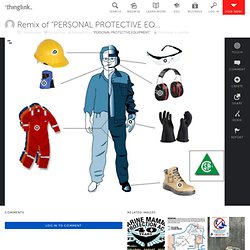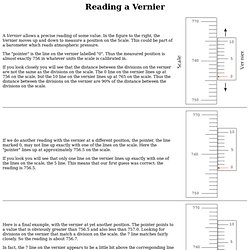

maurice porter
Online Presentation Tools. Funkee Classroom tools. Remix of "PERSONAL PROTECTIVE EQUIPMENT" Safety boots: should be worn at all times within the workplace where there are heavy items. also where there is most likely to be chemicals or sharp objects on the floor.

Head protection: Would be worn at all times within the work place, where objects are been moved and heavy machinery is being operated. a hard hat does not have to be worn in places like the office where there is a very low risk of been hit in the head. Ear Protection: should be worn where there are noises above certain decibles. full head protection against chemicals, heat, sparks, dust, etc: this should be worn when operating a welding set as these produce sparks. also when operating powertools such as angle grinders which produce dust and sparks. eye protection: Should be worn when operting power tools or tools which involve using a lot of force such as hammers. this is because these most likely to cause debris. eye protection should be worn within the workplace anyway where machinery is been operated around you.
1.4 Measurement, Calculations, and Uncertainties. Using Calipers. How To Use Calipers There are 3 basic types of calipers: Vernier Calipers - read the sliding scale along the top and bottom Dial Calipers - read the dial or the scale Electronic Digital Calipers - read the digital display Plastic is good for artifacts since it reduces the chance of scratching.

Outer Edges Take a look at the vernier calipers. Remember, it takes a lot longer to correct your work and find a mistake than to take the time to do it right the first time! Inner Edges Take a look at the top edge of the dial calipers. Bear in mind that hand made objects will have variance unlike the machine made objects of our time. Depth. Reading a Vernier. In the above photograph, you can see that on the top of the caliper are two "prongs" which can be used to measure an interior dimension.

There is also a piece of metal sticking out from the right side of the caliper, which is a depth gauge. Calipers commonly use a vernier scale. In the simulation below, you may "grab" the jaw of the caliper with the left button of the mouse and move it to some position. When you click on the Show button the distance between the jaws will be shown. Note that there is a small difference between the simulation and a real caliper: in the simulation the distance between the jaws is always an even multiple of a tenth of a millimeter. The Java applet to simulate the vernier caliper was written by Fu-Kwan Hwang, Department of Physics, National Taiwan Normal Univ., and is used by permission.
This document was written by David M. How to read the metric version of vernier calipers? Regarding to the metric version of vernier caliper, there are three kinds of graduations: 0.1mm, 0.02mm, 0.05mm.

How to read the metric version of vernier calipers correctly? For the metric version of vernier caliper, each graduation on the main scale is 1.00mm. Every tenth graduation is numbered in sequence - 10 mm, 20 mm, 30 mm, 40 mm, etc. Feeler Gauge & Straightedge. Vernier. Feeler Gauge & Straightedge. Vernier. Uncertainty in Measurement. Online Text Even the most carefully taken measurements are always inexact.

This can be a consequence of inaccurately calibrated instruments, human error, or any number of other factors. Two terms are used to describe the quality of measurements: precision and accuracy. Precision is a measure of how closely individual measurements agree with one another. Accuracy refers to how closely individually measured numbers agree with the correct or "true" value. Whatever the source, all measurements contain error. Consider a fourth-grade student who, when asked by his teacher how old the Earth is, replies "Four billion and three years old. " In order to convey the appropriate uncertainty in a reported number, we must report it to the correct number of significant figures.
Guidelines Nonzero digits are always significant–457 cm (3 significant figures); 2.5 g (2 significant figures). Bill Nye's introduction to the metric system.